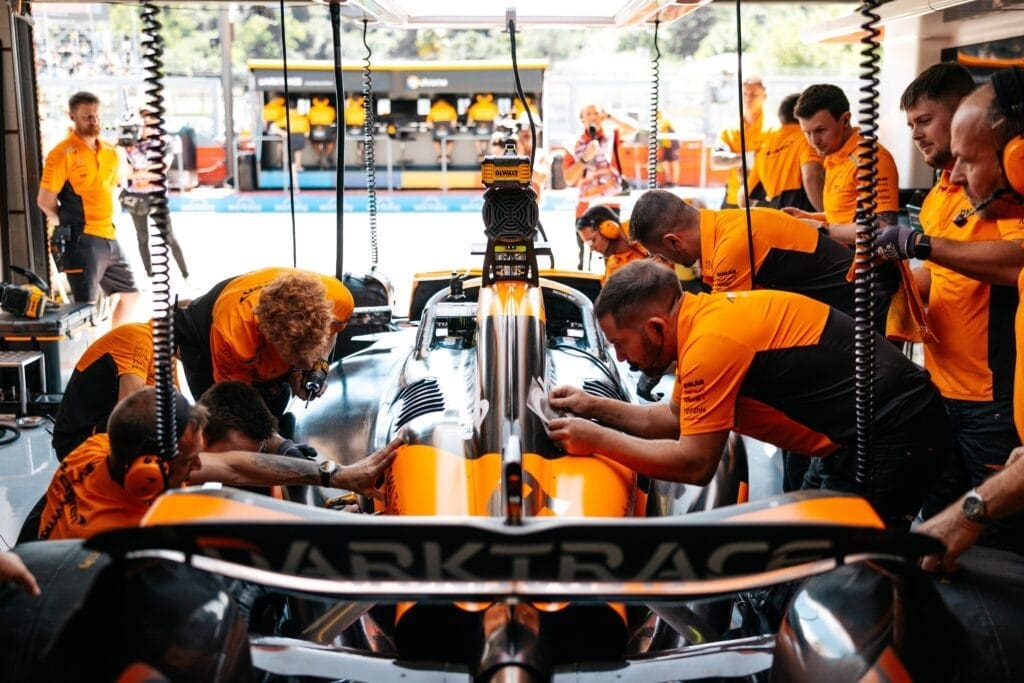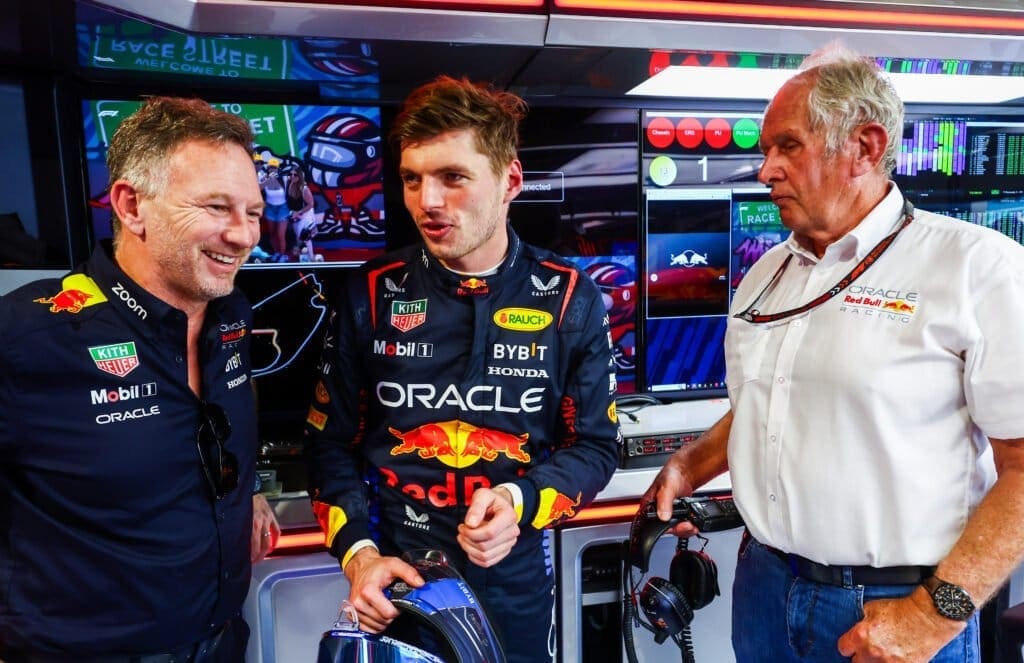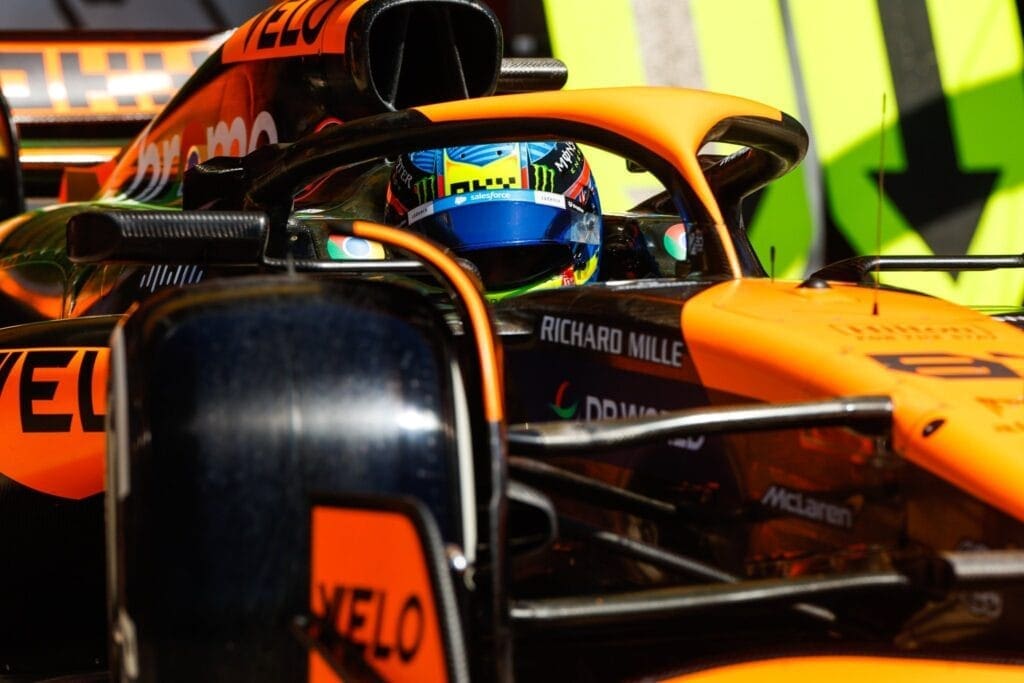The battle between Norris and Verstappen at Imola was almost a two-phase battle; both demonstrated to be faster in different stages. Let’s try to understand why. The McLaren strategy was fantastic.
In the initial phase of the race, Verstappen prevailed after an excellent start, consistently increasing his lead on the mediums, distancing himself by over six seconds until the first pit stop. Things didn’t change much with the switch to hard tires, as Norris, who lost time while overtaking Sergio Perez from Red Bull, didn’t seem to improve.
The gap stabilized around six seconds, then briefly increased to about seven seconds, with Norris seeming to be the man under threat as Charles Leclerc on Ferrari closed in. But about 20 laps from the end, it’s as if a switch was flicked in his McLaren, and Norris came alive. Slowly and steadily, he began to reel in Max, setting up an exciting end to the race.
From the outside, it seemed like it was simply a problem with Verstappen’s car that gave Norris his chance, but the reality was much more nuanced than that. There were two factors at play here: one was that Verstappen’s tires had gone past their optimal window, and he couldn’t recover them. And then, Norris’s meticulous management of the hard tires helped him perform at his best when it mattered most.
Verstappen’s comment on the end-of-race issues: “It was like driving on ice, really slippery, and you can feel when the tires no longer grip.”

What proved critical in how Norris avoided the same fate was precisely how he managed his tires in the early phase of the second stint. One of the characteristics of modern Formula 1 tires is that much of their overall behavior during a stint depends entirely on how they are treated when they touch the track for the first time.
Pushing too hard can negatively affect their temperature and subsequent degradation levels, costing the driver in terms of performance. Treating them with delicacy, as Norris did, can pay off when they reach an optimal performance point.
As McLaren’s team principal, Andrea Stella, said: “The main factor was the temperature at which the tires could operate.”
“It seemed that if you brought the tires to too high a temperature, the drop-off [delle prestazioni]was quite significant.” It wasn’t a plateau, but there was a sort of cliff, and you would lose a lot of performance.”
“For us, the tires at the beginning of the race in the first stint were too hot, and we were losing ground compared to Verstappen.”
“But in the second stint, especially Lando, he managed to control the pace while the tires were fresh.” And the newer they are, the more easily they heat up. So he was very patient in not overheating them, and that paid off in the end.”
The situation for Red Bull wasn’t helped by the fact that they hadn’t accumulated any knowledge on how the hard tires behaved at Imola. They had chosen to avoid a long run with the hard tires on Friday, the day they struggled to find the right setup for the RB20.
As Red Bull boss Christian Horner said: “In hindsight, perhaps it would have been better to do a long run on the hards on Friday, just because we decided to bring two new hard tires to the race. Maybe it would have been better to get information on the tires.”

Norris knew what it took to bring the hards into the right window, but his approach went well beyond mere patience.
It took him a bit in the initial phase of the second stint to understand what was happening (there was that radio message where he asked if others were pushing more than him) and how he could handle the situation in a phase of the race where others seemed faster.
“I wasn’t comfortable as soon as I went out with the hard tires,” Norris said. “I asked pretty quickly, like, ‘where am I going wrong?’ And they replied, ‘oh, they’re just pushing more than you are’,” Norris said.
“But I was asking because I felt slow and it didn’t feel like I could push much more,” Norris explained. “As soon as I started pushing, I felt like, you know, I had oversteer, understeer, locking up the tires,” Norris described. “The tires weren’t in the right window,” Norris concluded.
“And I think it’s clear, you know, with Max saying something similar, that as soon as they’re not in the right window, you can’t push,” Norris added.
“I pretty much changed all my settings on the steering wheel to try to help the rear tires and try to consume the fronts, because I had too much grip at the front at that point,” Norris explained. “And maybe five, ten laps later, things started to improve,” Norris noted.
“So, making all these changes and adjusting the differential and the brake balance, all these things really allowed me to get the tires back into a good window. As soon as I managed it, I felt confident enough to push. And as soon as I felt like I could push, everything started going in the right direction,” Norris elaborated.

In addition to Norris’s situation, the team had also anticipated that the weather would be much cooler than it actually was, so his car wasn’t in the perfect window.
“We expected it to be a bit cooler today than it was,” he said. “So we set up the car more for cold conditions rather than hot ones, and I think I paid the price overall,” he concluded.
“That’s why I had to nurse the tires so much and bring them up gently and take care of them,” Norris explained. “Because if I hadn’t, I would have simply fallen off a cliff like the others,” Norris emphasized.
“My only chance was to drive my race. “And that meant being under pressure from Charles for more laps than I would have liked,” Norris acknowledged.
“But as soon as I cleared the traffic and got back into my rhythm, I felt good with the car,” Norris noted. “The tires came back to me, and I could push, and I was happy,”
“From that moment on, the pace was incredible. So it’s a good sign”.
But while Norris left Imola wondering what could have happened if things had gone differently, it’s clear that the race highlighted both strengths and weaknesses of the McLaren package.
“It’s always a good thing to have good race pace,” he said. “But clearly when it gets hotter and there’s more degradation on the rear tires, we start to struggle a lot more”.
“And that’s something we know, maybe we could have prepared a bit more. But anyway, I’m happy with the result,” Norris concluded.
